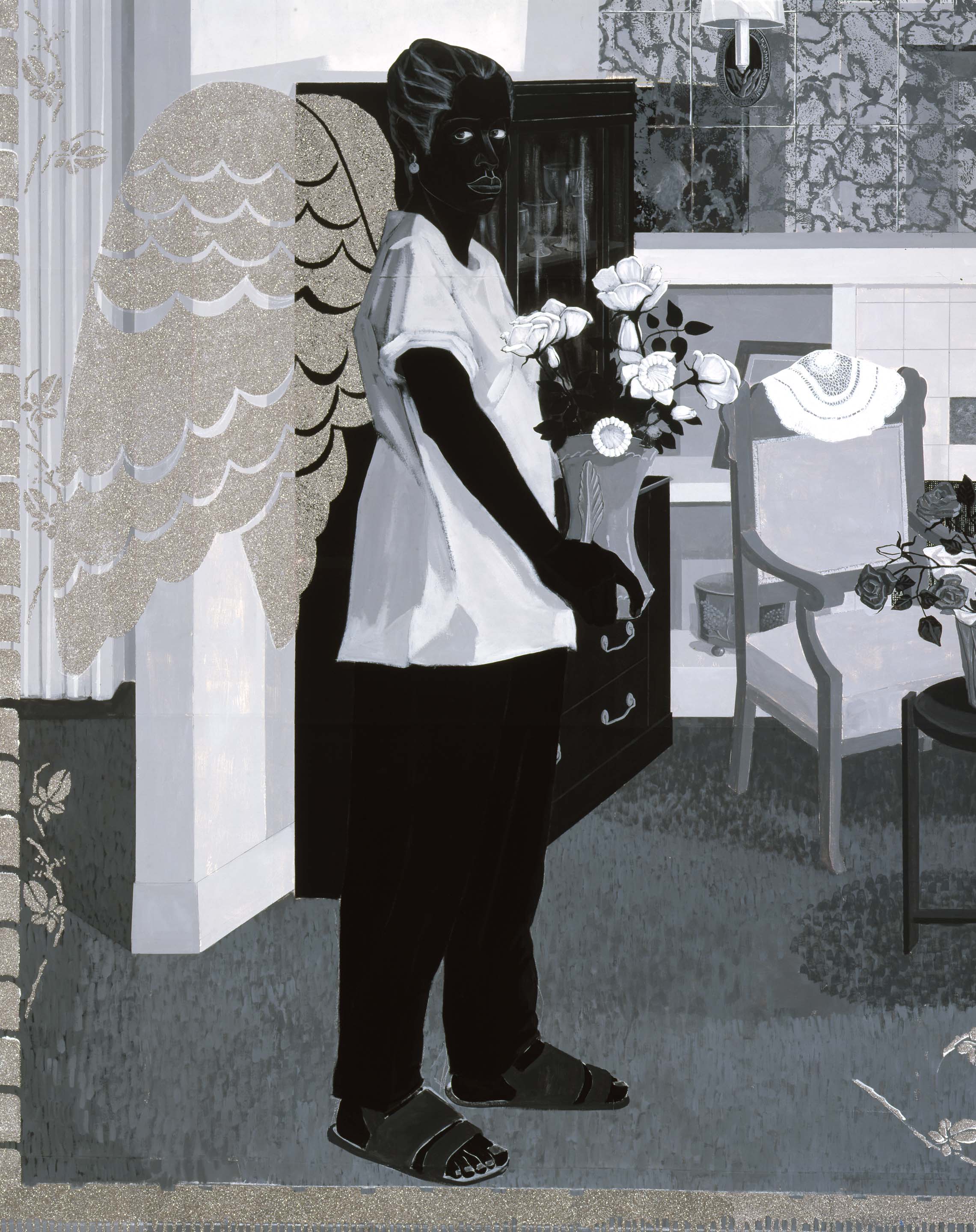 |
| Kerry James Marshall, Detail of Souvenir IV, 1998 |
Kerry James Marshall grew up at the exact time and places that is took to create himself as an artist. He was born in Birmingham, AL in 1955 and grew up in Watts- the projects outside of LA. He now lives and works in Chicago. He is the voice of confrontation. He confronts us with the ideas that maybe we don't think about or possible don't want to think about. His work looks at slavery, marginalization, misconception, and discrimination in the black community. He makes no apologies that his work is meant to be “unequivocally, emphatically black.” His art is also very reminiscent of folk art - with a contemporary edge. In 1978 he graduated from Otis College of Art and Design and he has taught at the School of Art and Design at the University of Illinois at Chicago. His style is unique and his figures are essentially the color black - which is a signature of his work. His art takes you somewhere, a place where you are forced to confront your preconceived notions, insecurities and prejudices in a way that I think can change people for the better. Sometimes we are so afraid to actually confront things that are hard, to talk about the realities and the atrocities, and to see people for who they really are and where they came from. Something I really enjoy about his work is that it is so honest. It's almost like he is trying to be honest with himself and the world at the same time. To get out the things in his heart so they are talk about and confronted. I also enjoy that his style is so unique that you could not mistake it for any other artist.
Comments
Post a Comment